Abstract
First-grade children engaged in seatwork behaviors under reinforcement schedules established according to the Premack Principle and the Response Deprivation Hypothesis. Across two experiments, schedules were presented to the children in a counter-balanced fashion which fulfilled the conditions of one, both, or neither of the hypotheses. Duration of on-task math and coloring in Experiment 1 and on-task math and reading in Experiment 2 were the dependent variables. A modified ABA-type withdrawal design, including a condition to control for the noncontingent effects of a schedule, indicated an increase of on-task instrumental responding only in those schedules where the condition of response deprivation was present but not where it was absent, regardless of the probability differential between the instrumental and contingent responses. These results were consistent with laboratory findings supporting the necessity of response deprivation for producing the reinforcement effect in single response, instrumental schedules. However, the results of the control procedure were equivocal so the contribution of the contingent relationship between the responses to the increases in instrumental behavior could not be determined. Nevertheless, these results provided tentative support for the Response Deprivation Hypothesis as a new approach to establishing reinforcement schedules while indicating the need for further research in this area. The possible advantages of this technique for applied use were identified and discussed.
Keywords: Premack Principle, Response Deprivation Hypothesis, academic behavior, reinforcement, contingencies
Full text
PDF
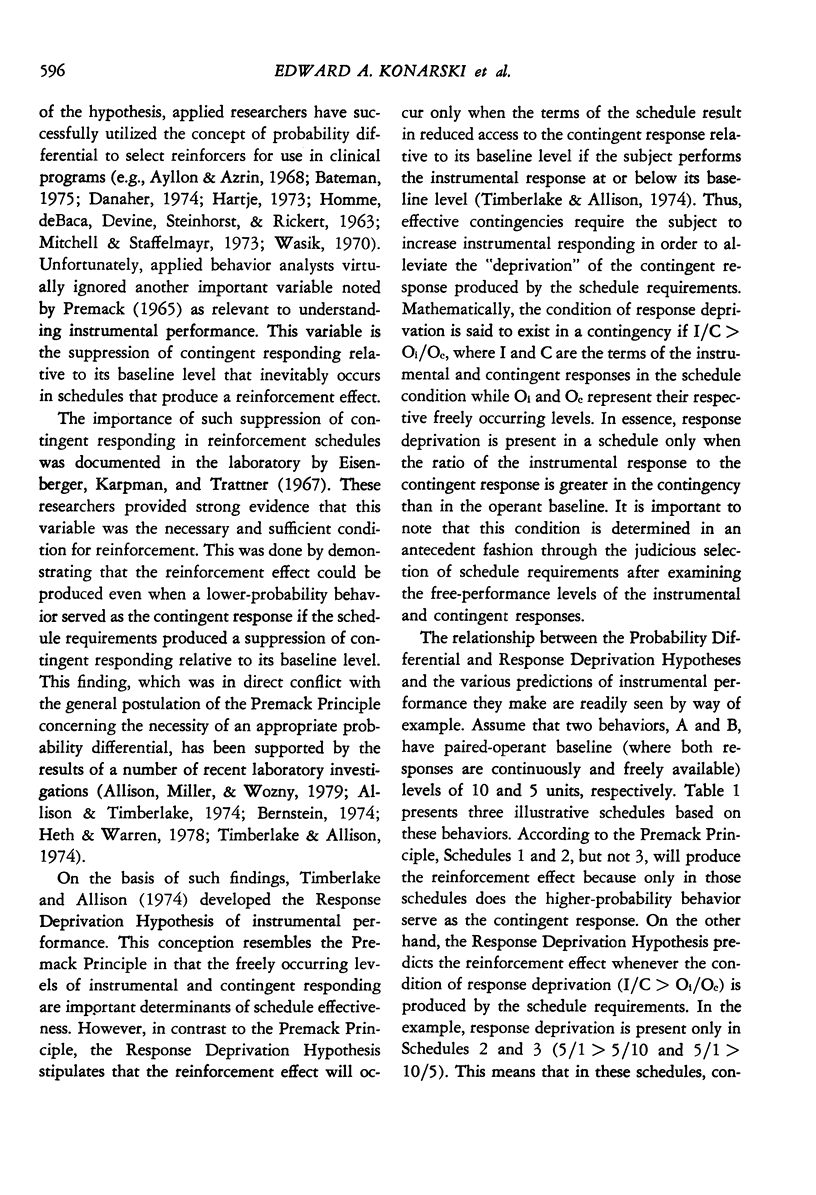
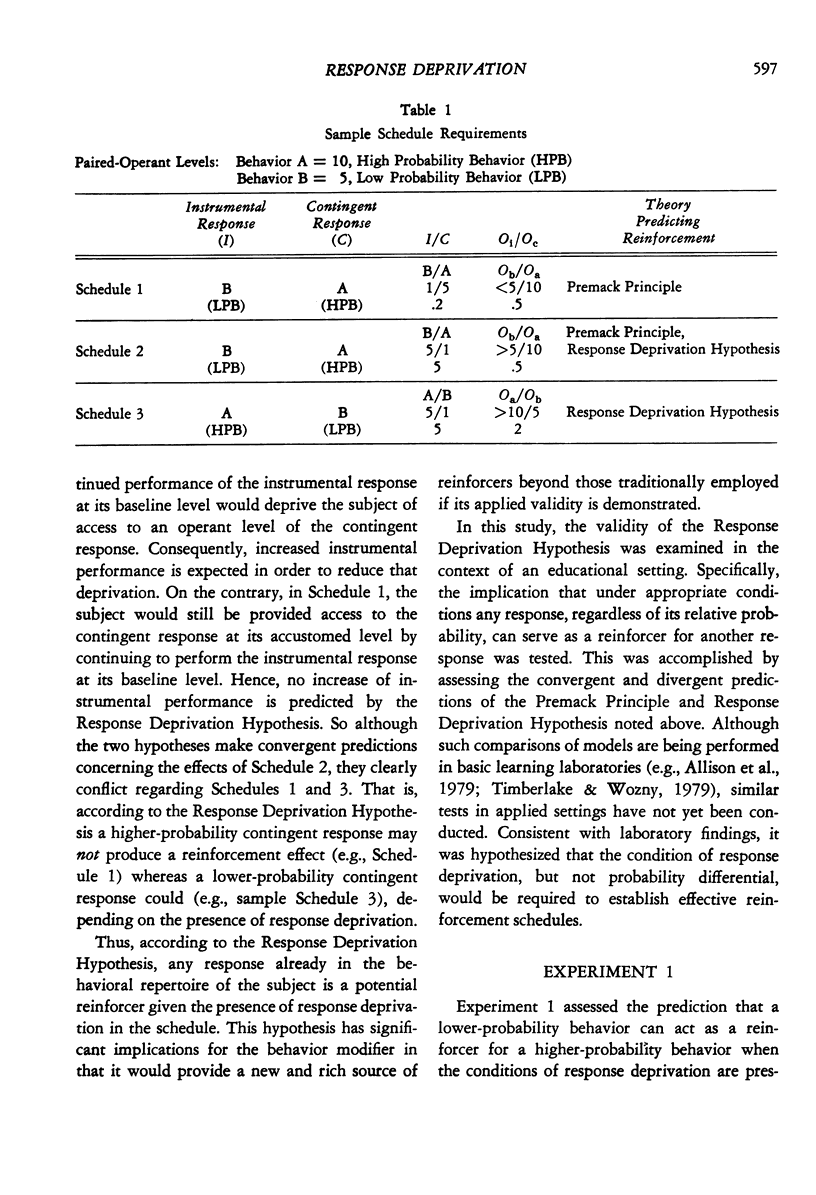
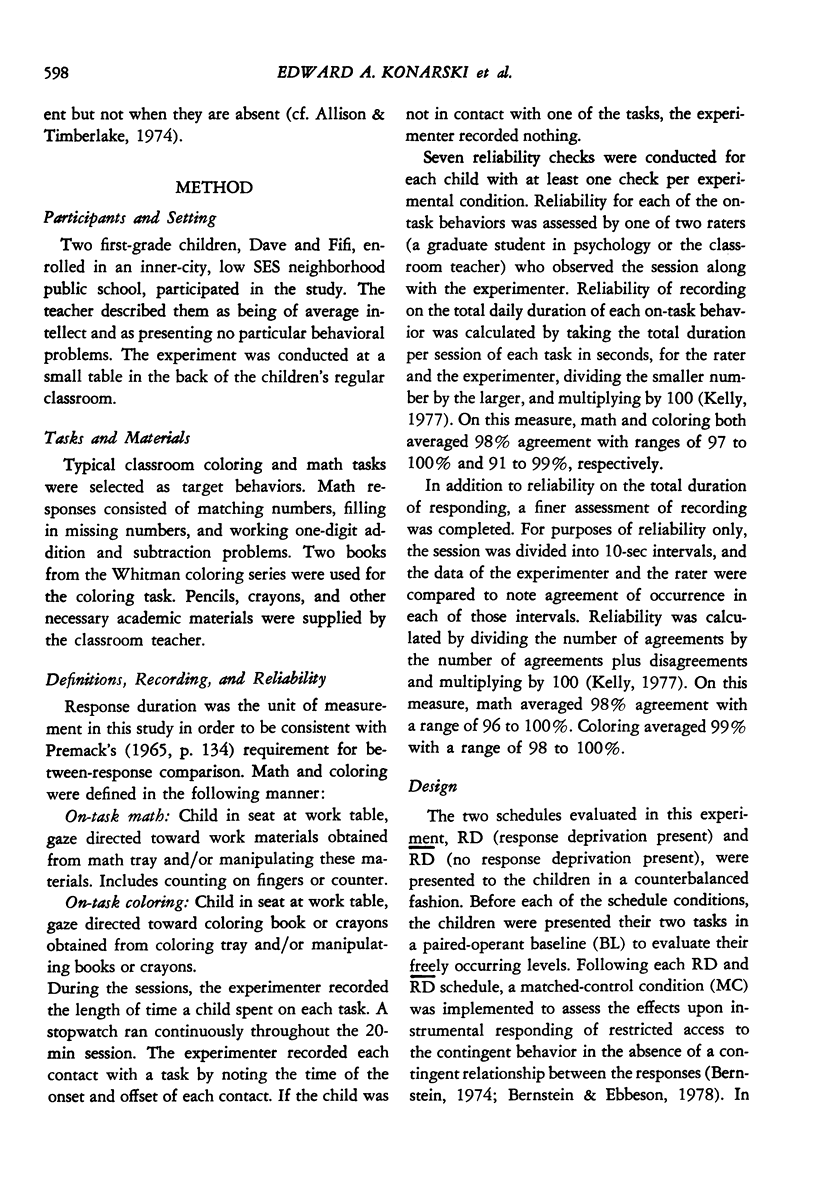
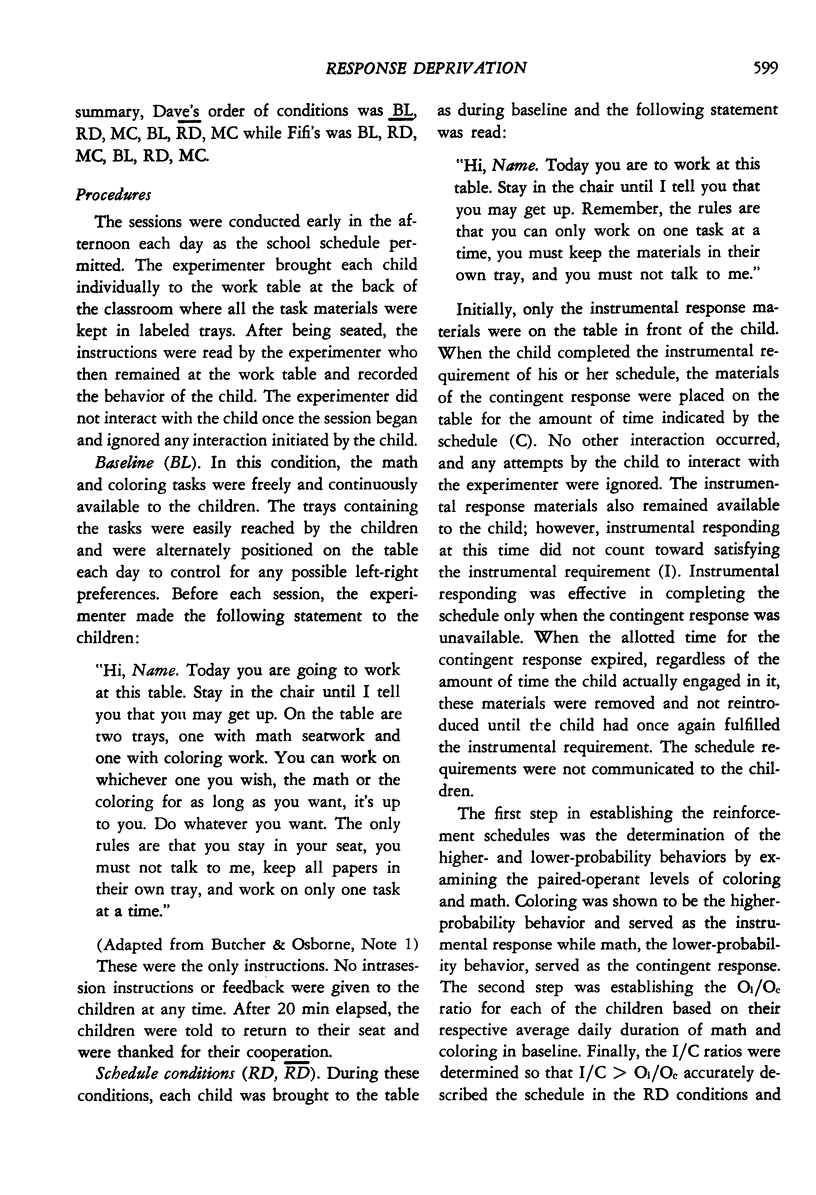
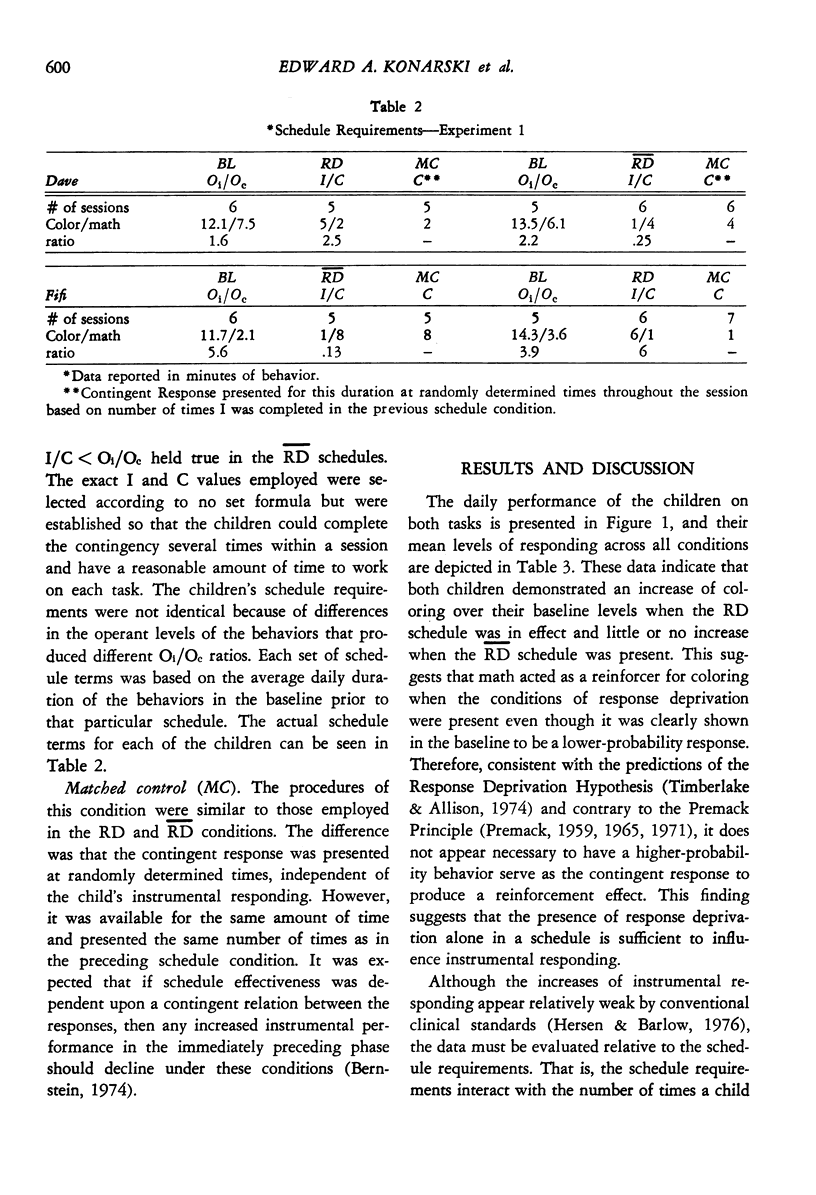
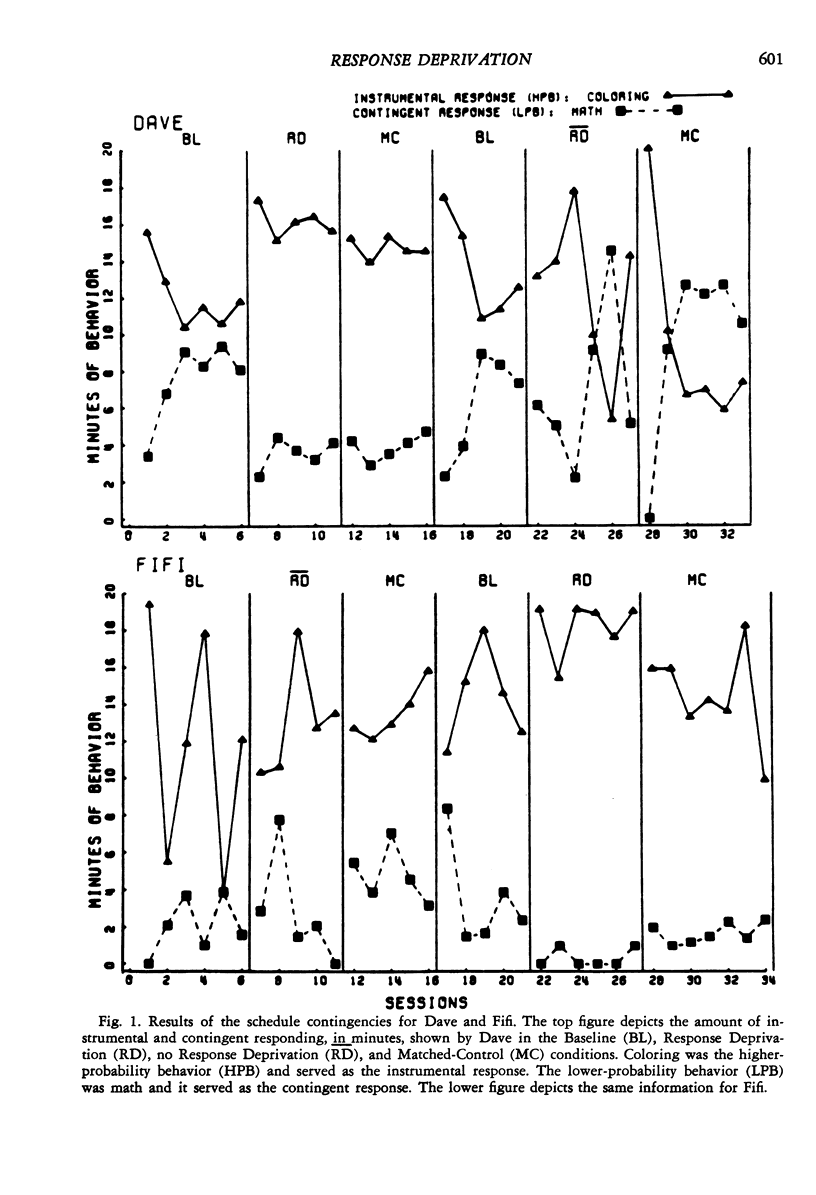
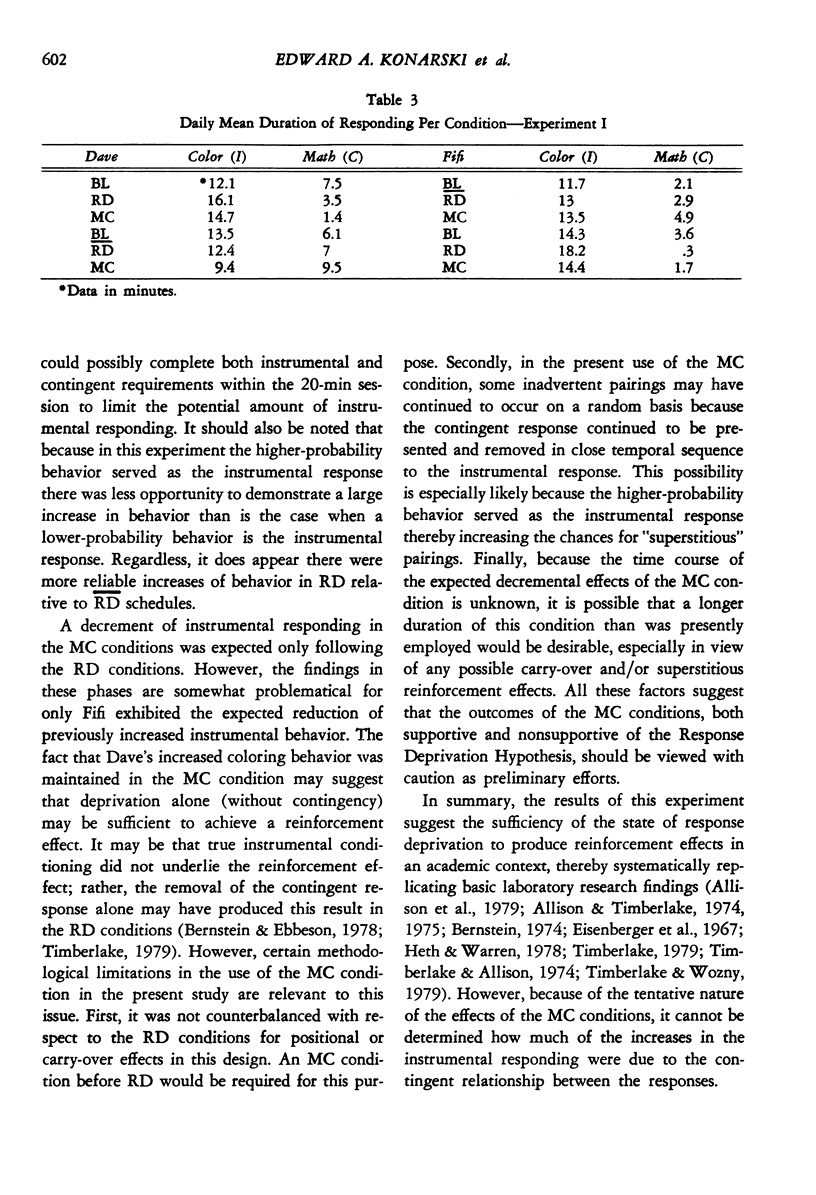
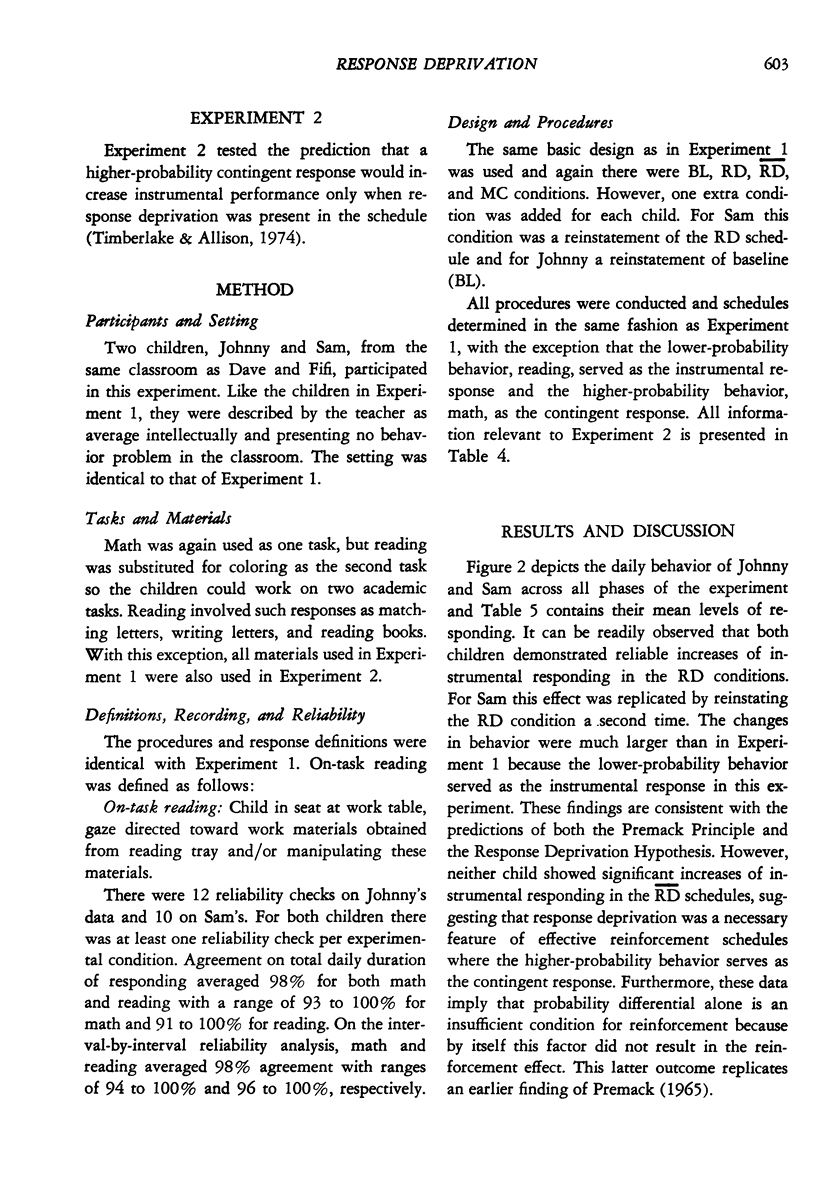
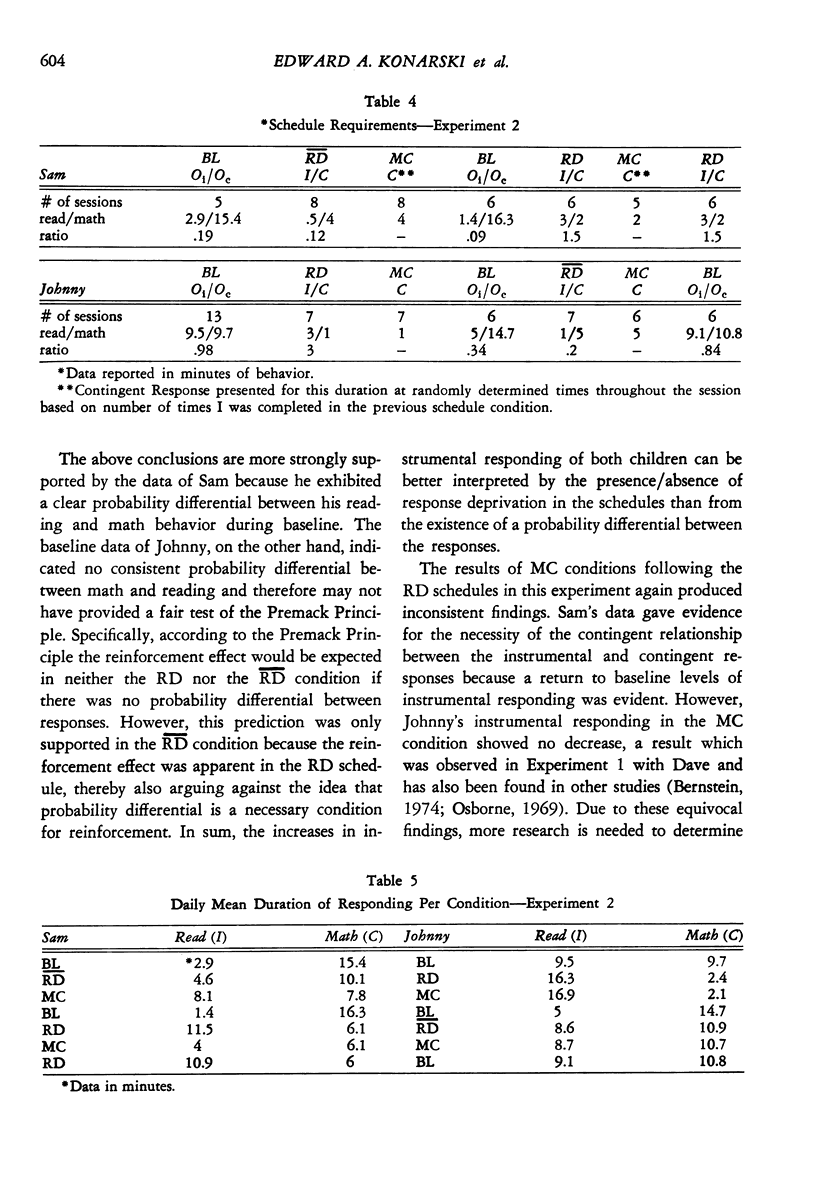
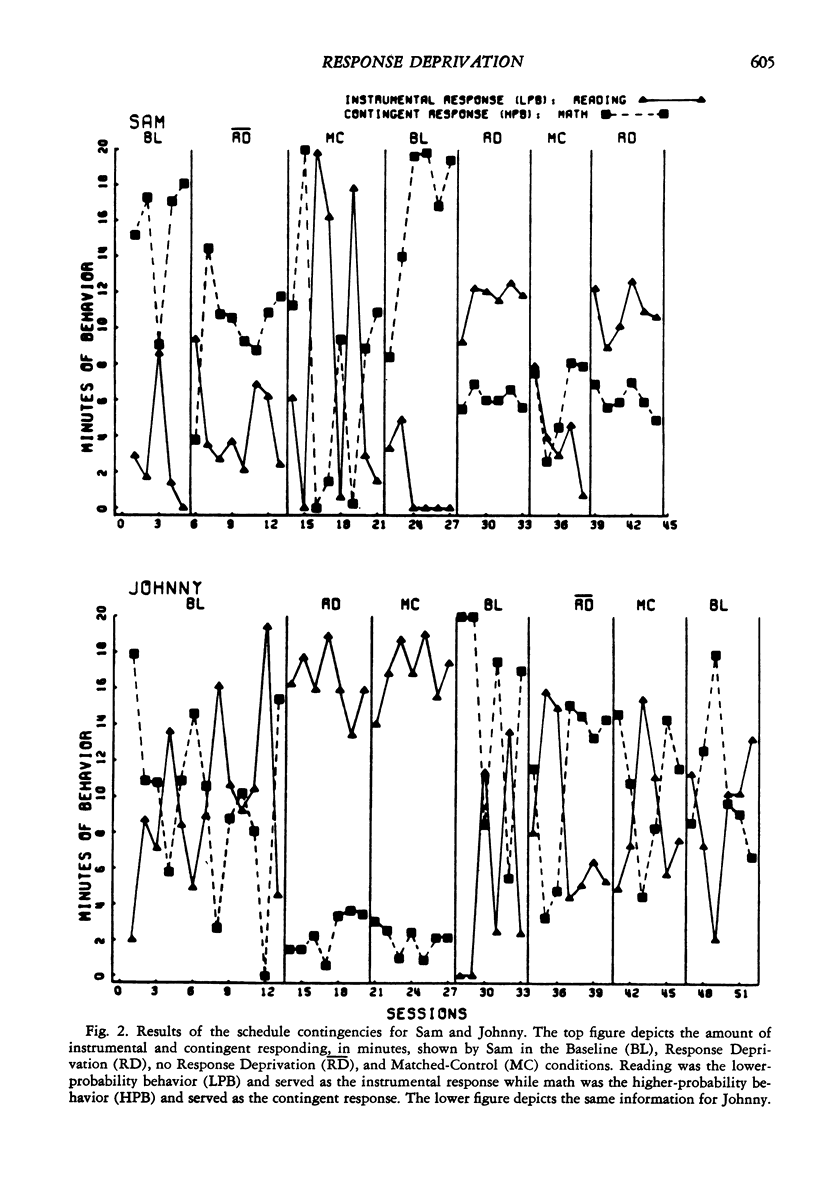
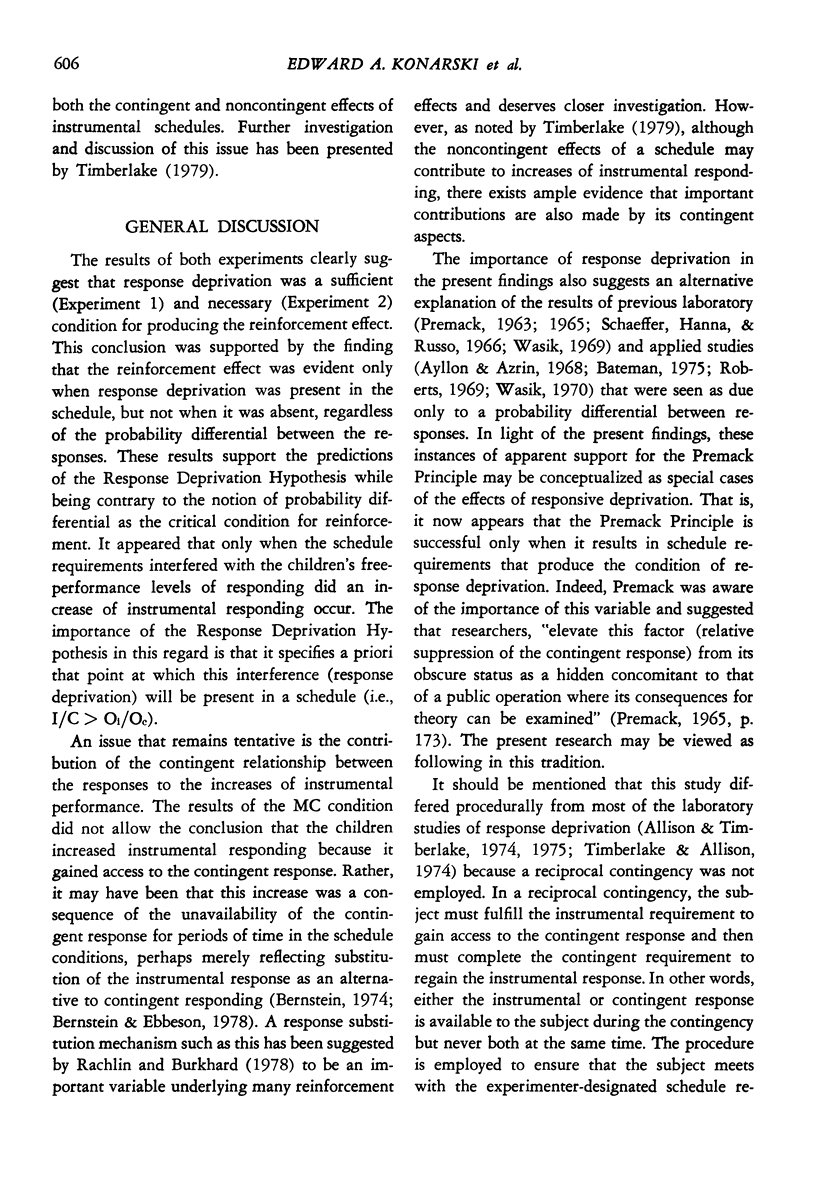
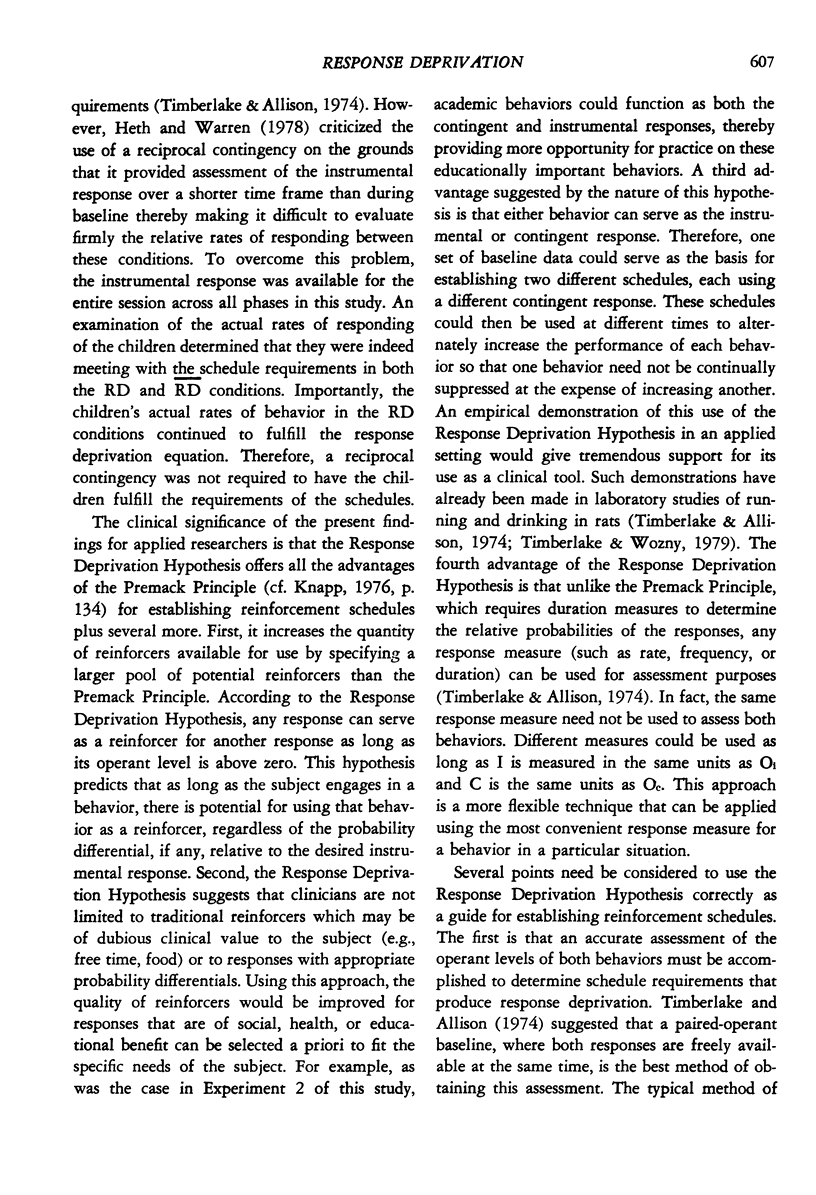
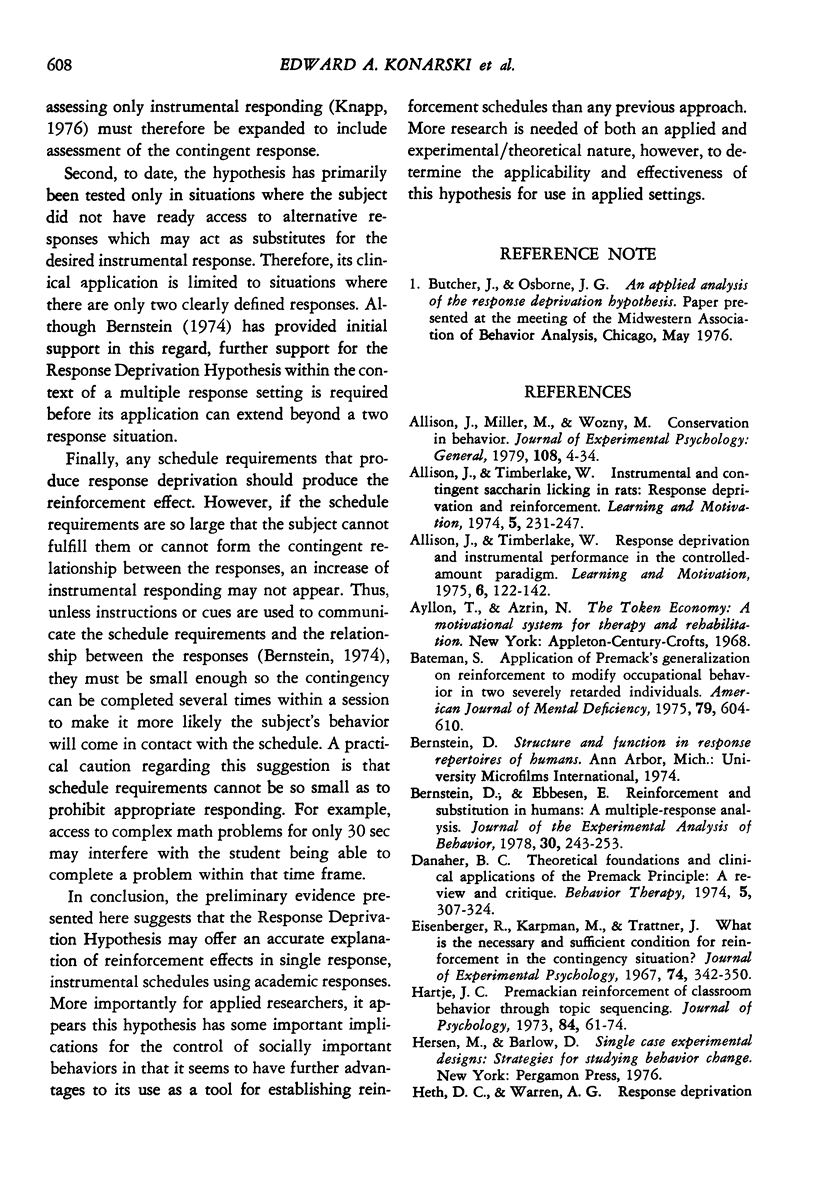
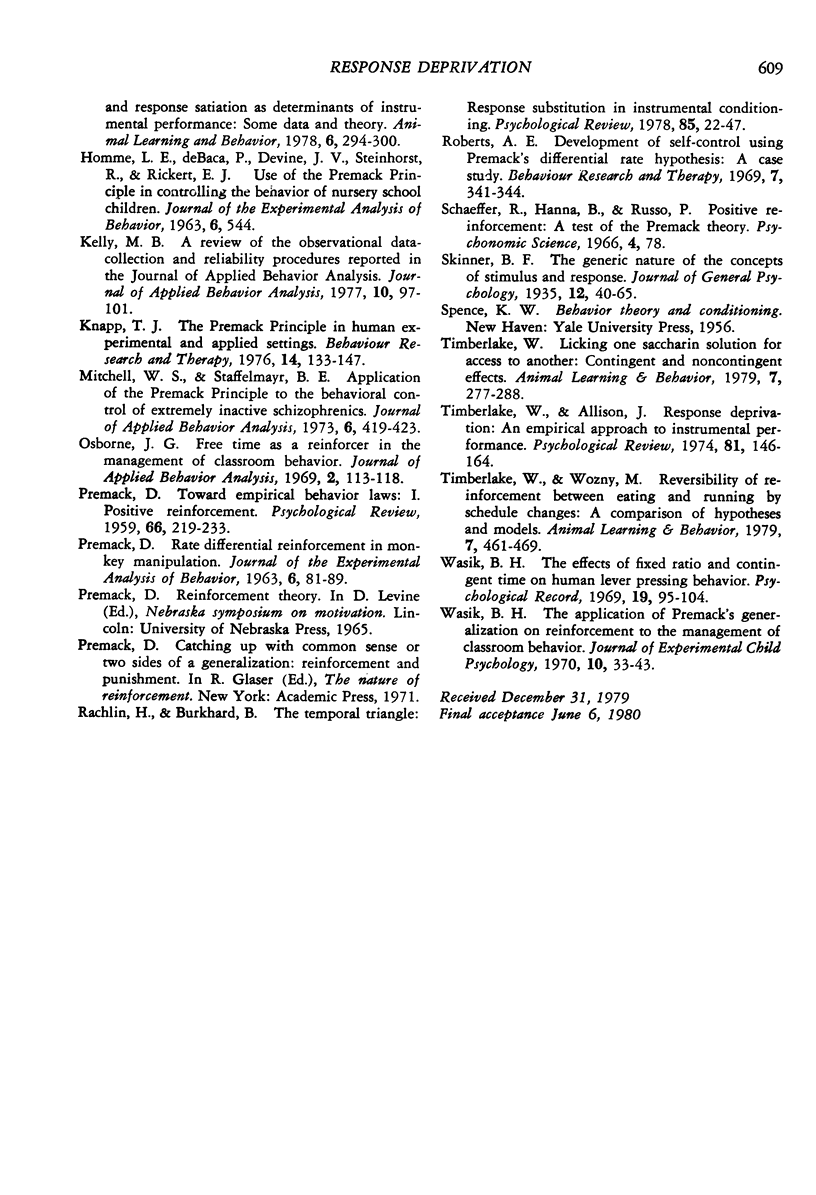
Selected References
These references are in PubMed. This may not be the complete list of references from this article.
- Bateman S. Application of Premack's generalization of reinforcement to modify occupational behavior in two severely retarded individuals. Am J Ment Defic. 1975 Mar;79(5):604–610. [PubMed] [Google Scholar]
- Bernstein D. J., Ebbesen E. B. Reinforcement and substitution in humans: a multiple-response analysis. J Exp Anal Behav. 1978 Nov;30(3):243–253. doi: 10.1901/jeab.1978.30-243. [DOI] [PMC free article] [PubMed] [Google Scholar]
- Eisenberger R., Karpman M., Trattner J. What is the necessary and sufficient condition for reinforcement in the contingency situation? J Exp Psychol. 1967 Jul;74(3):342–350. doi: 10.1037/h0024719. [DOI] [PubMed] [Google Scholar]
- HOMME L. E., DEBACA P. C., DEVINE J. V., STEINHORST R., RICKERT E. J. USE OF THE PREMACK PRINCIPLE IN CONTROLLING THE BEHAVIOR OF NURSERY SCHOOL CHILDREN. J Exp Anal Behav. 1963 Oct;6:544–544. doi: 10.1901/jeab.1963.6-544. [DOI] [PMC free article] [PubMed] [Google Scholar]
- Kelly M. B. A review of the observational data-collection and reliability procedures reported in The Journal of Applied Behavior Analysis. J Appl Behav Anal. 1977 Spring;10(1):97–101. doi: 10.1901/jaba.1977.10-97. [DOI] [PMC free article] [PubMed] [Google Scholar]
- Knapp T. J. The Premack Principle in human experimental and applied settings. Behav Res Ther. 1976;14(2):133–147. doi: 10.1016/0005-7967(76)90067-x. [DOI] [PubMed] [Google Scholar]
- Mitchell W. S., Stoffelmayr B. E. Application of the Premack principle to the behavioral control of extremely inactive schizrophrenics. J Appl Behav Anal. 1973 Fall;6(3):419–423. doi: 10.1901/jaba.1973.6-419. [DOI] [PMC free article] [PubMed] [Google Scholar]
- Osborne J. G. Free-time as a reinforcer in the management of classroom behavior. J Appl Behav Anal. 1969 Summer;2(2):113–118. doi: 10.1901/jaba.1969.2-113. [DOI] [PMC free article] [PubMed] [Google Scholar]
- PREMACK D. Rate differential reinforcement in monkey manipulation. J Exp Anal Behav. 1963 Jan;6:81–89. doi: 10.1901/jeab.1963.6-81. [DOI] [PMC free article] [PubMed] [Google Scholar]
- PREMACK D. Toward empirical behavior laws. I. positive reinforcement. Psychol Rev. 1959 Jul;66(4):219–233. doi: 10.1037/h0040891. [DOI] [PubMed] [Google Scholar]
- Wasik B. H. The application of Premack's generalization on reinforcement to the management of classroom behavior. J Exp Child Psychol. 1970 Aug;10(1):33–43. doi: 10.1016/0022-0965(70)90041-x. [DOI] [PubMed] [Google Scholar]


